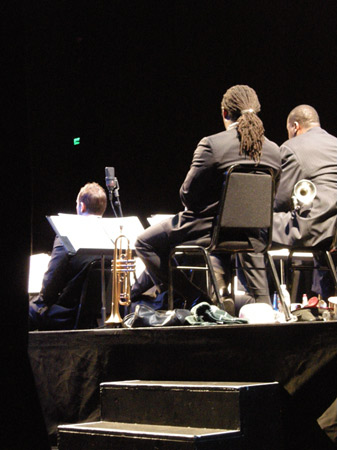Use the Wrong Angle

Unexpected angles and perspectives lead to invaluable insights.
What does watching a Jazz performance live from backstage have to do with giving your Palm Pilot to a Senior?
Jazz Backstage
Last week, Jazz legend Wynton Marsalis invited me backstage. It struck me—Watching a brilliant jazz performance from behind, where it is not meant to be watched, connects you with the spirit of Jazz like nothing else. Jazz by its nature is asymmetrical, dynamic, improvisational– (one can argue, like a start-up). From this vantage point, you can feel the chemistry and dynamics among the musicians. You can see their mutes, plungers, set lists, bags, water bottles. You can hear them talking to each other, gesturing, and signaling: all of the hidden elements that glue a performance together.
Backstage with Wynton Marsalis Video
Palm Pilots for Seniors
Recently I attended a lecture by Tim Brown, CEO and President of IDEO. He spoke about the importance of unusual perspectives in usability testing. Brown made an interesting point. A new product needs to be tested against “extreme users:” seniors, toddlers, etc. This way, the product managers can get insight into flaws and challenges much better than through a conventional usability test. Conventional users have worked their way through many of the challenging points through practice, so these challenges can be harder to spot. But they remain a challenge nevertheless, and overcoming them can present competitive advantage for the new product. Like in Jazz, the unconventional perspective brings us closer to the true spirit of the process at hand. At unexpected angles, invaluable insights are revealed.
Front view—————-Backstage view
Educated mind————-No-mind
Polished image————-Rough edges
Light————————— Dark
Full—————————– Empty
Fixed—————————-Dynamic
Squarely on——————Extreme angles
Balanced———————-Askew
Visible————————–Obscured
Clean—————————Untidy



You’re absolutely right, Drue! Sometimes it’s important to look at our work from another angle in order to take it to a new level or get closer to the truth.